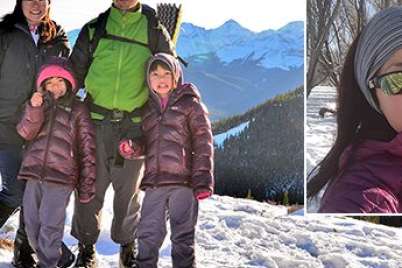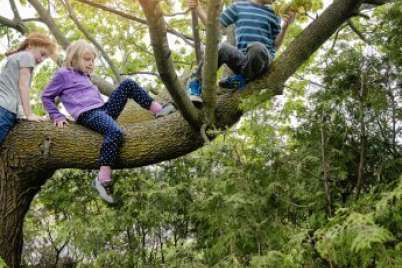
How to bring adventure to your local park
“Back when we were kids…”
Do you ever catch yourself telling stories to children about how play used to be? The freedom and friendships of the outdoors, and playing all day until the lights came on, were staples of childhood.
It seems like forever since that kind of free play lived in neighbourhoods, and according to Deb Doncaster, President of Earth Day Canada, “self-directed, outdoor, unstructured, free play for children has been disappearing from childhood for the last several decades.”
As a result, most Canadian children spend less than one hour outside each day at the expense of their physical and mental health.
In an effort to get kids more active outdoors, Earth Day Canada developed EarthPLAY, a program that connects kids to nature and brings play back to schools, parks, and streets. The best part? EarthPLAY is a free, renewable resource because it doesn’t cost anything and you don’t have to drive anywhere.
Through the use of loose parts, EarthPLAY gives kids the freedom to build, explore, and adapt their environment in ways that fixed playground equipment does not.
If you’re inspired to bring outdoor play back to your neighbourhood, Earth Day Canada has resources and strategies to support you.
Here are some tips on how to bring adventure to your local park:
Get out of the way and let them play!
Kids need other kids to play, as well as autonomy to explore their environment. According to the ParticipACTION Position Statement on Active Outdoor Play, kids are less active when they are closely supervised outdoors. Adults can promote this type of free play by ensuring there are no hazards first, and then stepping into the background to avoid interfering. For city and community staff, this means swapping sports equipment and structure with the freedom to explore the outdoors. Adventurous play requires no equipment, but rather a relocation of resources and understanding of the long-term health benefits.
Play with loose parts
Loose parts are the building blocks of adventurous play. They are any materials that can be moved and manipulated, and offer the abundance of nature in urban spaces where children may not find what they need for their natural creativity. Better yet, loose parts can be collected outdoors and from everyday items around the house at no extra cost. Natural resources, such as leaves and snow, can be relocated to play spaces with cooperation and support from municipalities. If moving or storage of loose parts becomes a challenge, consider working with a local councillor or city staff to keep materials on-site at parks and arenas. Loose parts can be kept alongside traditional sports equipment and provide kids with the freedom to create their own game.
Time, space, and permission to play
Is there time in the curriculum and programming for free, outdoor play? This is a key question to ask educators and activity supervisors when considering registration. According to the position statement from ParticipACTION, kids need “outdoor play that occurs in minimally structured, free and accessible environments” for socialization and healthy development. Loose parts add to the curiosity of natural spaces and minimal supervision allows children to direct their own activities, evaluate challenges, and make decisions.
In the spirit of Earth Day and childhood, EarthPLAY is helping kids connect to nature through play. Regardless of location—school, park, your backyard, or local streets—the evidence shows when children are outside they move more, sit less, and play longer. Imagine this as the reality of “today,” instead of “back in the day.” The resources below can help you get started.
Resources in this article:
Use of Loose Parts (Active for Life)
ParticipACTION Position Statement on Outdoor Active Play





